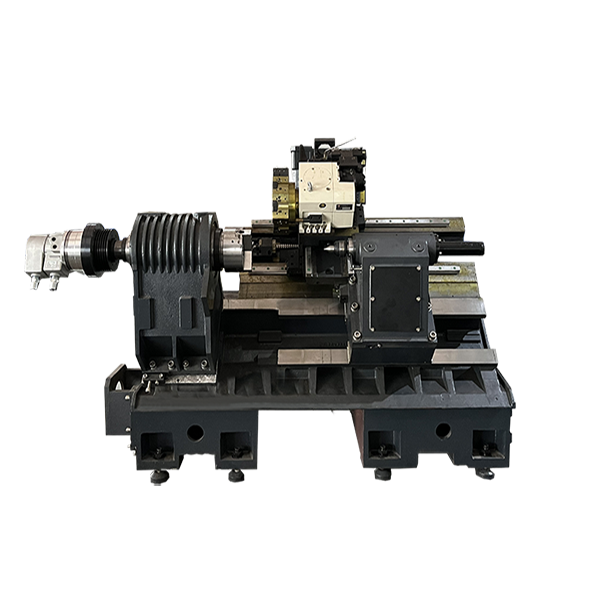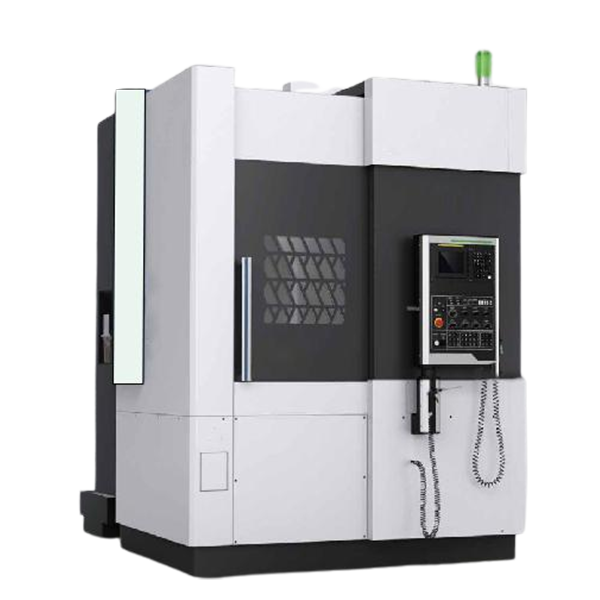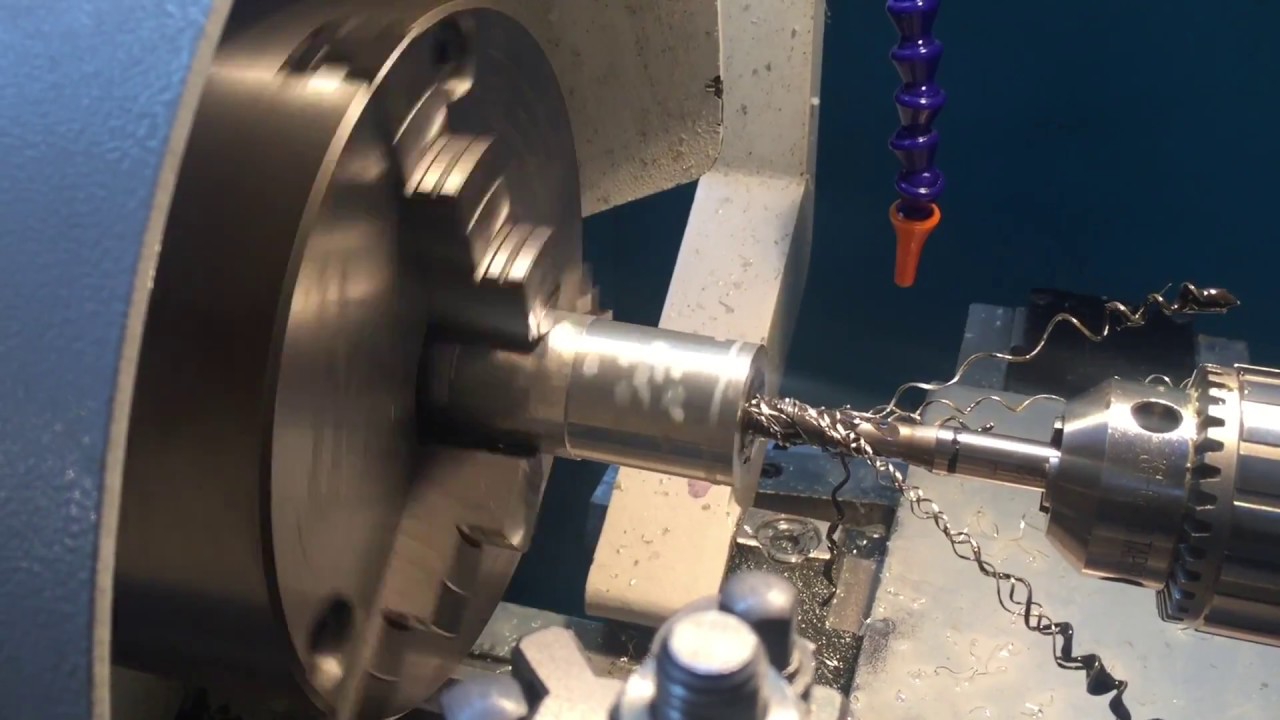The lathe machine is also known as the mother of all machine tools in the machine world. It is a versatile machine tool used in machining operations to shape, cut, drill, and turn workpieces. The workpieces are made of metal, wood, or other materials.
Lathes are used in manufacturing and repair processes to produce a variety of rotational symmetries. Lathes come in various sizes and configurations to accommodate different types of work.
This article will cover the basic parts of the lathe machine and its tapping operation in detail.
 |
 |
| Horizontal Lathe Machine | Vertical Lathe Machine |
The bed is the foundation of the lathe and provides stability and support for other components. It is typically made of cast iron and houses the main spindle.
The headstock is located at one end of the bed and contains the main spindle. It provides rotational power to the workpiece through various means, such as gears or belts.
The tailstock is positioned at the opposite end of the bed and can be moved along the bed's length. It often includes a quill that can be extended to support the workpiece and provide additional stability during machining.
The carriage is mounted on the bed and can move along the bed's length. It holds the cutting tool and can be controlled manually or through automated mechanisms.
The cross slide is part of the carriage and allows for lateral movement of the cutting tool perpendicular to the workpiece's axis. It enables precise depth and diameter control.
The toolpost holds the cutting tool, which can be of various types, including turning tools, boring bars, and threading tools. It allows for tool changes and positioning adjustments.
These are work-holding devices attached to the spindle. Chucks and collets securely grip the workpiece, allowing it to rotate with the spindle during machining.
The working principle of a lathe machine is based on the fundamental concept of rotating a workpiece. At the same time, a cutting tool is brought into contact with it to remove material and create desired shapes or features.
Here is a step-by-step explanation of how a lathe machine operates:
The workpiece, typically made of metal, wood, or other materials, is securely mounted in the lathe machine. It can be held in place using a chuck or collet attached to the lathe's spindle. The workpiece rotates along its central axis.
The cutting tool is mounted on the toolpost, part of the carriage. The toolpost can be adjusted to position the cutting tool accurately relative to the rotating workpiece.
An electric motor or another power source powers the lathe machine. The main spindle of the lathe is connected to this power source, causing it to rotate at a controlled speed.
The carriage holds the cutting tool and can move along the lathe bed. It can also move laterally across the workpiece using the cross slide. The tool movement is controlled manually or through automated mechanisms, depending on the lathe type (manual or CNC).
The operator or a CNC program controls the carriage's movement and the workpiece's rotation. As the workpiece rotates, the cutting tool is brought into contact with it. The cutting tool removes material from the workpiece through a combination of linear and rotational movements:
Turning: The workpiece is rotated, and the cutting tool is fed along its length, resulting in cylindrical shapes or reducing the diameter of the workpiece.
Facing: The cutting tool is moved perpendicular to the workpiece's axis to create a flat surface.
Boring: The tool is moved into an existing hole to enlarge or refine it.
Threading: The cutting tool creates threads on the workpiece's external or internal surfaces.
Cutting fluid or coolant is often applied to the workpiece and cutting tool during machining to reduce friction, heat generation, and tool wear. This also helps in chip removal.
The machining process continues until the desired dimensions, shapes, or features are achieved. Afterward, the machined workpiece is inspected for accuracy and quality using measurement tools like calipers, micrometers, or thread gauges.
Once the machining is completed and inspected, the workpiece is removed from the lathe machine. Additional operations, such as deburring or polishing, may be performed to achieve the desired surface finish.
The working principle of a lathe machine relies on the precise control of tool movement and the rotation of the workpiece, allowing for a wide range of operations, including turning, facing, threading, and more.
The operator's skill or CNC programming expertise is crucial for achieving precise and high-quality results.

Tapping is a common machining operation on a lathe machine to create threaded holes in a workpiece. Threads are essential in many applications where screws, bolts, or other fasteners join parts together. Here's a general overview of how tapping is typically done on a lathe machine:
● Secure the workpiece in the lathe chuck or collet. Ensure that it is properly aligned and centered.
● Select the appropriate cutting tool for tapping. The tool should match the thread size and type you want to create.
● Set the lathe machine's speed and feed rate based on the tapped material and thread specifications. Refer to cutting speed and feed rate charts for guidance.
● Face and center drill the workpiece to create a starting point for the tap.
● Use a centering tool or the lathe's tailstock to ensure the tap aligns accurately with the workpiece's axis.
Tapping Process
● Lower the tap into the hole in the workpiece.
● Engage the lathe's spindle, and it will rotate the workpiece and the tap.
● Apply cutting fluid to the tap and workpiece to reduce friction and heat generation.
● Gradually advance the tap into the workpiece while maintaining a steady feed rate. The tap should create threads as it rotates.
● Use the lathe's threading dial or another method to disengage the half-nuts when the desired thread depth is reached. This allows the tap to rotate freely without advancing further.
● Reverse the lathe's spindle to back the tap out of the threaded hole.
● Remove the workpiece from the lathe.
● Inspect the threaded hole to ensure that the threads are clean and accurate.
● Use a thread gauge or test the fit with the intended fastener to ensure the threads are correctly cut.
Tapping on a lathe machine requires precision and attention to detail to create accurate threads.
Using the correct tap size, cutting speed, and feed rate for the material being worked on is essential. Safety precautions, such as wearing appropriate personal protective equipment and following the lathe's operating procedures, should always be observed when machining.

Several lathe machines are designed for specific machining purposes and applications. Here are some of the common types of lathe machines:
The engine lathe, or a manual or bench lathe, is one of the most common lathes. It is characterized by its manual operation, where an operator controls all the movements, including the workpiece's rotation and the cutting tool's movement.
Engine lathes are versatile machines suitable for various turning, facing, threading, and drilling tasks. They come in different sizes to accommodate a wide range of workpiece dimensions and are a fundamental tool in many machine shops for general-purpose machining.
Turret lathes are designed for high-production machining. They feature a turret toolpost with multiple cutting tools, allowing for rapid tool changes. This design is particularly advantageous for repetitive manufacturing tasks, as it eliminates the need for manual tool changes.
Turret lathes are commonly used in industries where efficiency and productivity are paramount.
Computer Numerical Control (CNC) lathes have automated control systems that precisely dictate tool movements and workpiece rotation.
CNC lathes offer exceptional accuracy, repeatability, and the ability to perform complex machining operations.
Operators program these machines to produce intricate parts with minimal manual intervention. CNC lathes are ideal for high-precision manufacturing, prototype development, and custom machining.
Vertical lathes, also known as vertical turning centers (VTCs) or vertical boring mills (VBMs), have a vertical orientation with the workpiece mounted on a horizontal table.
These machines are well-suited for machining large, heavy, and symmetrical workpieces like discs, rings, and wheels. Vertical lathes are often used in industries that require the turning and machining oversized components.
Multi-spindle lathes feature multiple spindles that can simultaneously machine several workpieces. This design significantly reduces cycle times, making them highly efficient for high-production manufacturing environments.
Industries such as automotive and aerospace frequently use multi-spindle lathes to boost productivity by performing multiple machining operations simultaneously.
Swiss-type lathes are specialized for small, high-precision parts. They are commonly employed in industries like watchmaking and medical device manufacturing.
These lathes utilize a sliding headstock and a guide bushing to support and guide the workpiece, allowing for exceptional accuracy and the machining of long, slender parts with intricate details. Swiss-type lathes are renowned for their precision and versatility in producing miniature components.
Oil country lathes are built for machining large-diameter and long workpieces, typically found in industries like oil and gas.
These lathes feature robust constructions and powerful spindles to handle heavy-duty applications.
They are ideal for turning and threading on pipes and other oil field equipment, providing the necessary strength and stability for demanding machining operations.
Each lathe type has unique features and capabilities, making them suitable for specific machining requirements and industries. The lathe choice depends on factors such as the type and size of workpieces, production volume, precision needs, and efficiency considerations.
This article covers a comprehensive introduction to Lathe machines. used in machining operations to shape, cut, drill, and turn workpieces.
It covers the basic components, including the bed, headstock, tailstock, carriage, cross slide, toolpost, and chuck.
It also covers the lathe machine's working principle, the lathe machine's tapping operation in detail, and the types of lathes used in different industries.